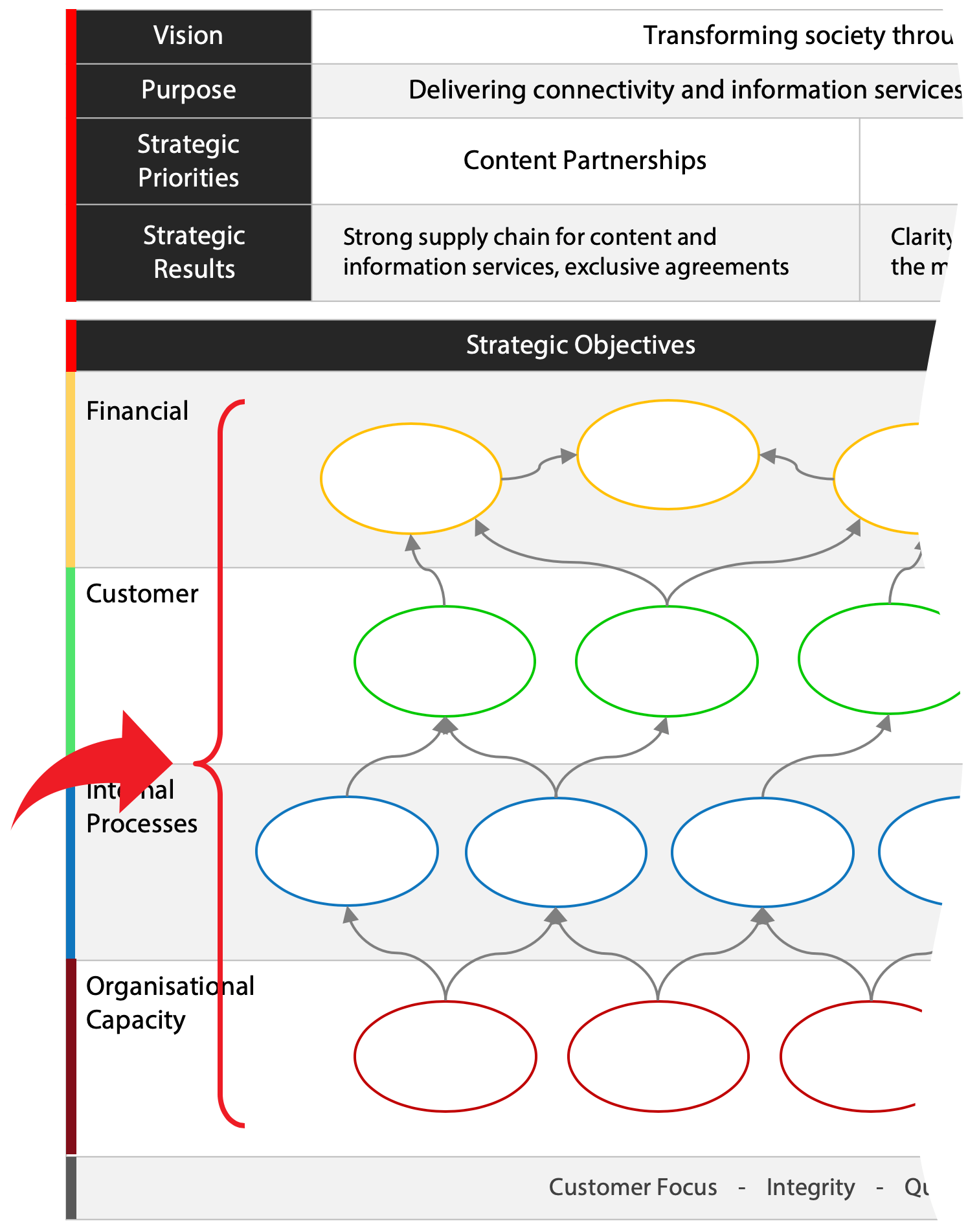Strategic Planning Process
Step Three - Objectives
Build a set of strategic objectives based on your priorities
Why do I need objectives?
Strategic objectives break down a set of strategic priorities into ‘workable’ items. Objectives tend to be continuous improvement activities assigned to individuals, and usually fall under four categories: Financial, Customer, Internal Processes and Organisational Capacity.
Creating objectives
When thinking of objectives for your business, you need to consider both the view from the top; that is your vision, purpose and priorities, and also from the ground up, using the skill and expertise of your employees.
It is essential that you think about how they contribute to your overall strategy and what level of control the business actually has over the objective. Are they single objectives and not several objectives under the guise of one? Are they truly related to something in need of attention?
So, for example, a top-line objective could be “increase company profit”. And while this is easily measurable, the more controllable form could be “increase the number of projects worth £250k or more”.
Adding value
Having a list of objectives is good, but they all need to relate to each other and have value as a group – all for one and one for all!
A great way to do this is to go back to the trusty post-it note method and get writing. Remember the rule of three. Under each of your categories (Financial, Customer, Internal Processes and Organisational Capacity) come up with three or four strategic objectives.
Then add value by creating relationships between them. Place them in the right category and then link them together working from the bottom to the top. Lower levels will drive change or impact the outcome of upper levels.
For example – Improving supply chain technology will improve stock reliability and therefore decrease costs.
Getting results
Next, it’s time to start thinking about how each objective is perceived in the ‘real world’ – what is it that each objective is actually trying to achieve? What is the success point?
Let’s take “implement a sales plan” as an example. Whilst you may think this is an objective, actually, it is not. It is a project, not a continuous improvement activity. The only thing you can say about a project is that it will start, it has a middle, and it will end. We think it might have value, but we need an objective to prove it has value. So why might we want to implement a sales plan? There could be lots of objectives, for example: ‘To increase the number of sales’ or ‘To reduce the time to convert a qualified lead’. These are quantifiable objectives.
Objectives need to be improvement activities that have clarity in interpretation, described using a results-oriented language and have to be measurable.
To get the most out of this workshop download the Strategic Planning Workbook, the Strategic Plan Summary one-page presentation and the Strategic Plan Template from the Intrafocus website.
Underpin this process with our Balanced Scorecard Software








